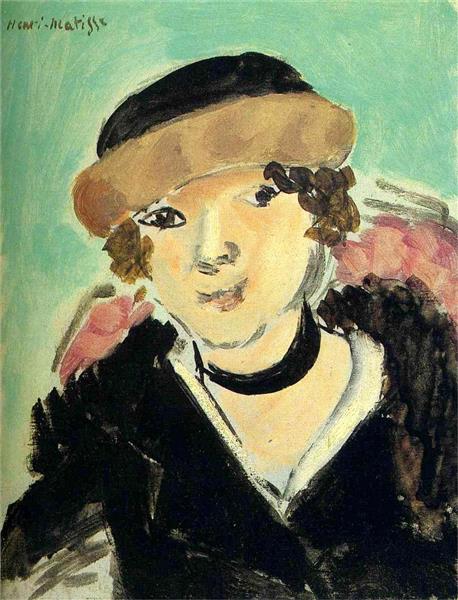Description
Henri Matisse, an iconic figure of modern art, is known for his innovative use of color and his mastery in composition. In his work "Marguerite" from 1914, we find a sublime example of his unique approach and his ability to capture the essence of his subjects with a remarkable economy of means. This painting portrays his daughter, Marguerite Matisse, with a combination of strong lines and vivid colors that reflect both the influence of Fauvism and a clear evolution towards greater simplicity and clarity in his style.
When observing "Marguerite", one cannot help but be immediately drawn to the distinctive use of color. Matisse's palette here is intense yet balanced. The contrast between the deep reds of the background and the pale blue used in Marguerite's dress creates a visual tension that keeps the observer engaged. This use of color not only defines the space in the painting but also reveals the mood and personality of the depicted subject. Marguerite is represented with an air of serene contemplation, and the attention to detail in her facial expression and posture suggests a level of intimacy and affection that goes beyond mere representation.
The composition of "Marguerite" is another notable aspect. Matisse uses bold lines and simplified forms to delineate his daughter with astonishing clarity. The lack of unnecessary details allows Marguerite's identity to emerge with greater strength and presence. The soft gestures and rounded shapes of Marguerite's face and hair are complemented by the straighter and more severe lines of the background, creating a harmonious balance in the work. This deliberate focus on form and color, far from detracting from the painting's depth, results in a purer and more emotionally resonant representation of his daughter.
It is also important to contextualize this work within Matisse's artistic evolution. During these years, Matisse was exploring different ways to simplify and synthesize his compositions, distancing himself from the technical complexity that characterized his earlier works. "Marguerite" symbolizes this transition towards a more direct and accessible expression. The painting reflects the influence of his contemporary and sometimes rival, Pablo Picasso, in his search for a form of art that could communicate immediately and powerfully.
Throughout his career, Matisse painted several portraits of Marguerite, and each offers a unique window into his relationship with her and his evolution as an artist. Comparing "Marguerite" with other portraits from the same period, one can appreciate how Matisse experimented with different techniques and approaches, continuously seeking new ways to capture the essence of his daughter and, by extension, his own feelings and perceptions.
In summary, Henri Matisse's "Marguerite" is a work that resonates with a clear and exciting simplicity that is nonetheless laden with profound emotional and artistic content. The mastery with which Matisse handles color and form in this painting is a testament to his permanent place in the pantheon of great modern artists. For anyone wishing to understand Matisse's genius, this work offers an essential and moving insight.

